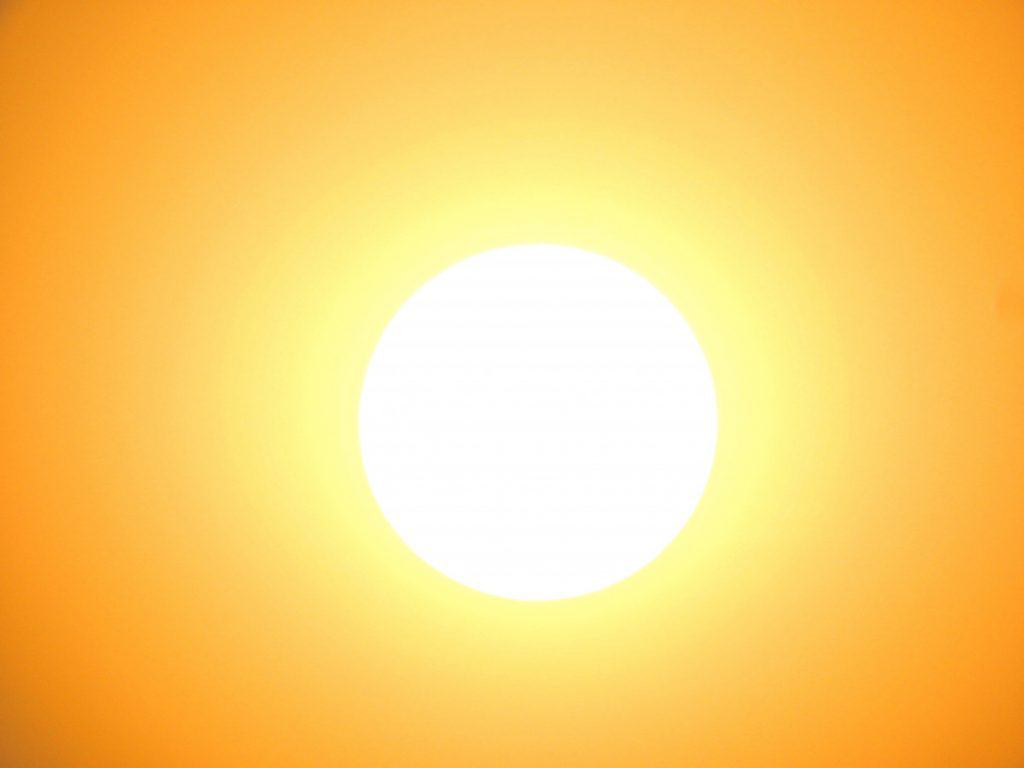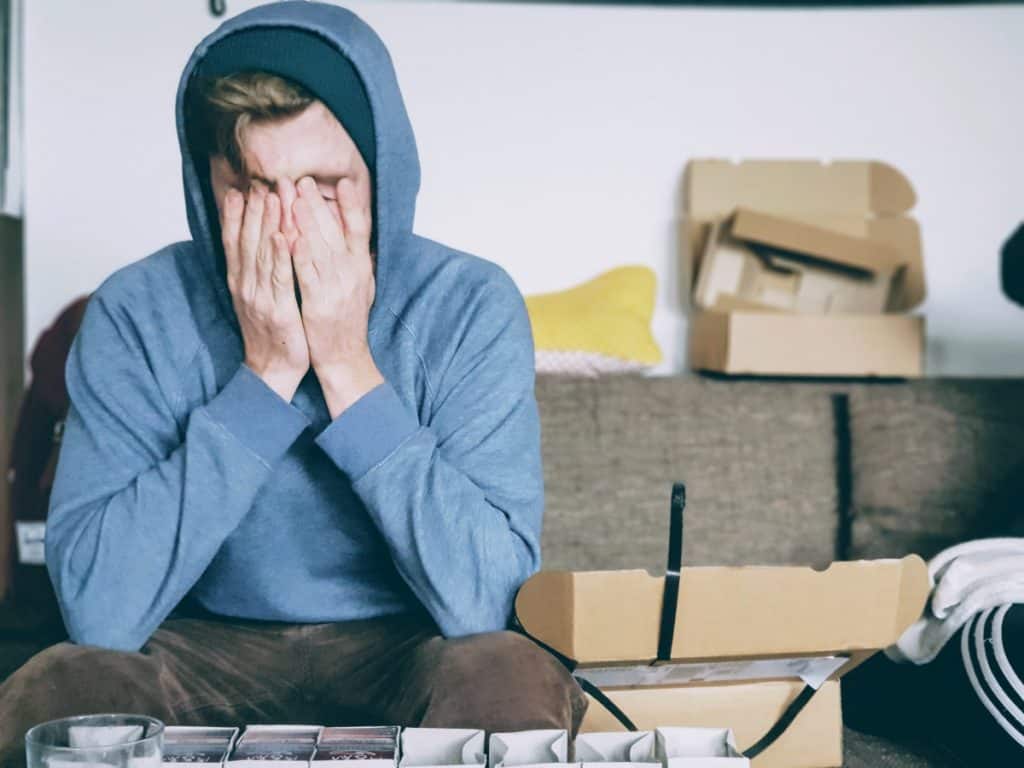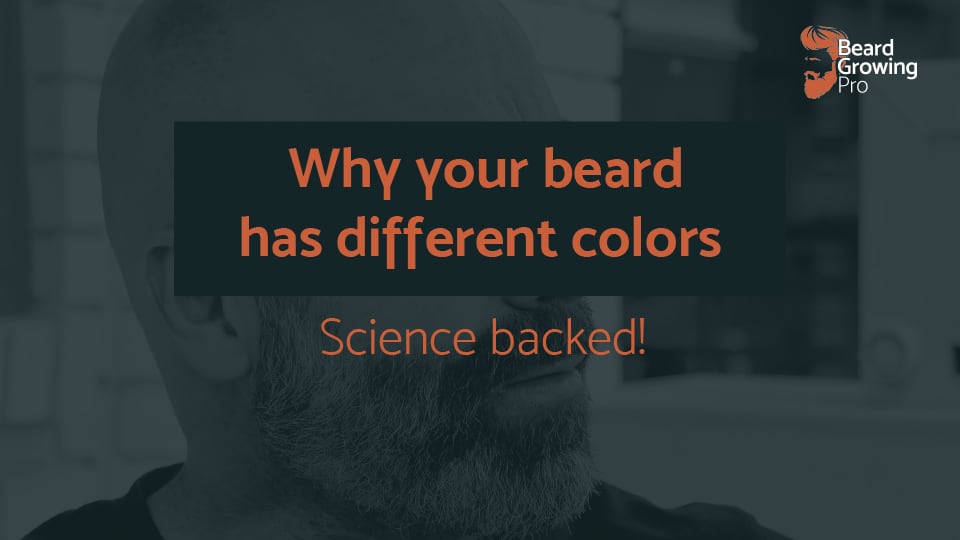As I was growing at my beard I certainly noticed that there were a ton of different colours appearing. My beard is now over two years old and I have noticed that it has orange, brown, grey (since the age of 32), and the occasional blonde hair. I’ve been confused about why my beard was turning blonde when it is primarily a dark brown. In this article, I will show you all of the reasons why your beard may be turning blonde and the science behind beard colours.
The reason your beard is turning blonde is because it is losing brown and black pigment cells (eumelanin) leaving behind the yellow and red pigments (pheomelanin). This may be to inevitable effects of ageing or external factors such as sunlight, chemical damage, or lifestyle choices.
To understand why your beard is going blonde we first have to understand what is causing the coloration in your beard. It all comes down to a molecule called melanin.
Melanin is a molecule which is synthesised in the body and is dark in colour which helps protect against the effects of UV radiation.
There are two types of melanin that are produced by the body: brown/black eumelanin and red/yellow pheomelanin.
It is the relative proportion of these melanin molecules which determine the colour of your beard and skin. As your beard grows the pigment molecules get incorporated into the hair structure. If you want to know more about if it is normal to have different colours in your beard check out my other article – click here.
The relative proportion of these melanin molecules can change over time. If you are finding that your beard is going blonde it is likely that the brown and black pigments have stopped being incorporated into the beard hair.
The reason for this could be that, genetically, you are simply predisposed to losing this pigment as you get older. Or, it may be that your beard is being affected by external factors such as sunlight, pool chlorine or saltwater, stress, lifestyle choices, or other chemicals which have caused your hair to go blonde.
A study from 1969 shows us how the melanin pigments undergo irreversible physiochemical changes which can completely eliminate the original colour of the fibre.
Let’s take a quick look in more detail at each of these options and how they affect the colour of your beard.
The top reasons your beard is turning blonde
The top reasons your beard is turning blonde fall into two major categories. The first category is genetics. That means that your beard will always have turned blonde as that is what your inheritance and genes dictate.
Genes
Our genes determine a huge part of your beard growing potential and your hair color. One of the biggest factors in determining beard growth is genetics.
It’s quite a complicated set up – no one gene will determine your beard color. The good news is that you don’t need to have an expensive DNA test to determine if you have the right genes to grow a beard.
All you have to do is look at your family.
That also doesn’t mean the men on your father’s side of the family either look at your mum’s side too! The genes required to grow a good, thick, and lush beard comes from both your maternal and paternal (mum and dad’s) gene pool.
The issue is that the inheritance of genes can get pretty complicated. For example, your brother may be able to grow a beard and you can’t! That’s because your brother, like you, inherits 50% of their genetic makeup from their father and 50% from their mother BUT they could be different genes!
We even get a very small amount of genes from even more distant relatives. You share about 0.78% of your DNA with your great-great-great-great-great grandfather (aka 5th great-grandfather). So, even though it is very unlikely that your beard growing potential comes from your great-great-great-great-great grandfather – it is a possibility.
Despite the recent advances of gene therapy and stem cell therapy there is nothing that you can do about your genetics stop fighting your genes is a futile endeavour and embracing your newly blonde beard would be the fastest route to happiness.
Besides your genetics there are a few external factors which can cause bleaching in hair.
Sunlight
I think many of us have witnessed the effect of sunlight on our hair. After a relaxing summer holiday we have all noticed that our arm hairs go blonde after spending a lot more time outside than we usually do.

The sun is a very powerful force when it comes to changing pigmentation in your hair. UV light is able to cause structural damage to the surface of the hair which can easily degrade the pigmentation found inside.
Apparently, this bleaching effect is more common in people with a European heritage and up to 48 genetic markers have been identified as influencing the ease that hair bleaches! So, if you want a lighter beard – getting out in the sun in a safe and sensible way i.e lots of sun cream!
Chemical damage
Your beard may also be turning blonde due to chemical damage from chemicals in the environment.
The chemical damage can be caused by bleaching agents that come into contact with the beard.
For example, if you regularly use strong bleaching cleaning agents as part of your job the vapour that is produced during use can easily build up over time and cause your beard to become blonder.
Any chemical that you use which contains hydrogen peroxide will also significantly move the hair to a lighter colour. There are a range of different everyday chemicals that use hydrogen peroxide and a simple splash on your beard can destroy the brown and black pigments in your beard.
If you want to understand exactly what happens when you bleach your hair with a chemical there is an excellent YouTube video which explains the science behind it. Watch this, below.
Overheating hair
Using too much heat on a hair can also cause it to lose pigments. The darker shades of the pigments are more likely to absorb the heat of the hair and cause irreversible damage to those pigments.
In extreme cases of overheating hair you can actually cause bubbles to form in the shaft of the hair. This was first reported in 1986 and it was further characterised in 1992. In 1994, there was a study performed to have a look at the origin of bubble hair. They found that if you heat the hair too much you can end up with gas bubbles forming in the hair.

The study found that if you use a hairdryer that is operating at about 30° hotter than a typical hairdryer bubbles are able to be formed in the hair. This can also be caused by a beard straightener that is operating at too high of a temperature.
The bubbles can change the colour of the hair and lighten it due to the refraction of the light and the fact that it can pass through without being absorbed. The combination of bubbles from high heat and the reduction of the pigment cells could also be a reason why your beard is turning blonde.
Stress
We’ve all heard of stress turning your hair grey – but can it change it blonde? It can certainly impact the colour of beard hair and, until very recently, there was a lot of scepticism on whether or not stress can cause your beard hair to change colour.

There is no doubt that stress can have a variety of really bad effects on the body. Up until a recent study, in 2020, the popular idea that stress can cause hair to turn grey was not scientifically proven.
Researchers wanted to test and determine if stress can cause hair to grey and if it did how it did it.
The researchers used mice to examine the effects of stress on hair color. The mice were exposed to 3 different types of stress involving mild, short-term pain, psychological stress, and induced stress by restricting their movements. The results were very interesting… All of the mice put under each form of stress caused a noticeable greying in their hair which meant that the color building blocks had been lost at the root of the hair as it is growing.
Hormonal change
Your body may be going through hormonal changes which causes your beard to turn blonde. Scientific studies have shown that melanin synthesis and pigment transfer to hair can be changed by hormonal signals.
Throughout your life your body is changing. This means that the relative levels of testosterone in your body are also constantly changing.
A study in 2001 looked into the ageing effects on free testosterone levels in healthy men. They measured the testosterone and sex hormone binding agents in 890 men. After compensating for date effects they observed a significant decrease in testosterone levels. The testosterone levels decreased by about 20% in men over 60, 30% over 70 and 50% over 80 years of age.
This change in testosterone level may be the cause of the changes in your beard colour.
Lifestyle choices
There are a number of lifestyle choices which may affect the colour of your beard and cause it to go blonde. These include your diet and whether or not you smoke and have a healthy lifestyle in general.
We are able to influence our bodies by the foods we put in it and, also, the sorts of activities that we decide to partake in.
Diet
Making sure that your body is operating as efficiently as possible is as simple as eating a well-balanced diet. If you make bad diet choices on a daily basis there is no doubt that you can severely influence and impact the overall health of your body. Your beard and its colour is no different.
Your body requires a huge amount of vitamins and minerals to grow a beard healthily.
This includes the colour pigments as well. There are a load of different nutritional deficiencies that can have a massive impact on your hair growth and colour.
To grow a beard it takes all of these vitamins:
- vitamin A – vitamin A is required by your hair to stay moisturise and grow efficiently. You can find this mineral in sweet potatoes, carrots and leafy green foods such as kale and spinach.
- Vitamin B – vitamin B helps carry oxygen’s and nutrients to the roots of the hair. The roots of the hair is the only anchor point the hair has to your face and therefore keeping this healthy is a priority for you. B vitamins can be found in whole grains, meat, and seafood.
- Vitamin C – vitamin C is used by the body to make collagen and can help hair from ageing prematurely. This is a very important aspect of beard growing and you can find vitamin C in citrus and strawberries.
- Vitamin D – vitamin D’s role in hair growth is not fully understood but a lack of it can result in hair loss. So get out into the sun in a safe manner – with lots of suncream – to increase the amount of vitamin D in your body. If you work in an office environment make sure that you are particularly conscious of getting enough vitamin D throughout your day.
- Vitamin E – vitamin E helps fight the oxidative stress in your body. Protecting your body from free radicals is an important way to ensure that your hair does not age prematurely. Normal environmental conditions and your daily life can produce free radicals and so eating a good amount of almonds, avocados and sunflower seeds are a good way to protect your hair.
If you want to find out which foods help increase beard growth check out my YouTube video, below, where I go through some of the best things to eat for protecting your beard growth.
Smoking
A study published in 2013 looked at the hair of smokers and investigated a question: Does smoking cause premature graying of hair?
The study was conducted in a non-clinical setting and included 207 participants. Participants were divided into two groups, namely early gray hair and normal gray hair. In this study, premature whitening was defined as the appearance of gray hair before the age of 30.
The study found that there is a significant relationship between gray hair (early white) before the age of 30 and smoking. The prevalence of smokers in the premature gray hair group was higher (40.2% vs. 24.7% of normal gray hair). Using some complex mathematical calculations, it is found that smokers are 2.5 times more likely to have gray hair prematurely.
I think based on this research, we can safely say that if you are a smoker, then you are likely to grow a lighter (white or blonde beard) earlier.
Summary
In this article, we have gone over everything you need to know and answer the question: why is my beard turning blonde. Ultimately, it comes down to your body’s capability to produce pigment cells and incorporate them into the hair. There are a variety of reasons why your beard may be turning blonde and fall into two categories. The first being that it is your genetic predisposition for having your beard turn blonde and the second is that there is an external factor (such as UV light, stress, diet choice, smoking) that is influencing the colour of your beard hair.
If you have recently had a large shift of lifestyle or you have just taken up a new job where you are exposed to more chemicals it could be as simple as reverting back to your old ways if you do not want your hair to turn more blonde than it already is.
Alternatively, simply accepting your new colour and rolling with it will be the path of happiness for many years to come.




